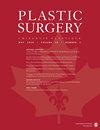Understanding Pediatric Clinical Scaphoid Injuries: A Prospective Radiological Study
IF 0.6
4区 医学
Q Medicine
引用次数: 0
Abstract
Controversy exists in the management of children presenting with clinical suspicion of a scaphoid fracture but normal radiographs. The purpose of this study was to prospectively evaluate the potential role for advanced imaging in children with suspected scaphoid fractures. Participants with clinical suspicion of a scaphoid fracture but 2 sets of radiographs negative for fracture were casted and underwent both computed tomography (CT) and magnetic resonance imaging (MRI). The primary outcome was the prevalence of scaphoid fracture and other imaging findings. Twenty-five participants were enrolled. Nine participants (36%) were found to have a scaphoid fracture on either CT or MRI. Concordance of CT and MRI was found in 64% of cases. Future studies are required to better understand the clinical significance of these injuries, the role of advanced imaging, and the most appropriate treatment in children with suspected scaphoid fractures.了解儿童临床舟状骨损伤:一项前瞻性放射学研究
争议存在于处理儿童表现为临床怀疑舟状骨骨折,但正常的x线片。本研究的目的是前瞻性地评估高级影像学在疑似舟状骨骨折儿童中的潜在作用。临床怀疑为舟状骨骨折但两组x线片阴性骨折的参与者进行铸造,并进行计算机断层扫描(CT)和磁共振成像(MRI)。主要结果是舟状骨骨折的发生率和其他影像学表现。共招募了25名参与者。9名参与者(36%)在CT或MRI上发现舟状骨骨折。64%的病例CT与MRI相符。未来的研究需要更好地了解这些损伤的临床意义,先进的影像学的作用,以及对疑似舟状骨骨折的儿童最合适的治疗。
本文章由计算机程序翻译,如有差异,请以英文原文为准。
求助全文
约1分钟内获得全文
求助全文
来源期刊

Plastic Surgery
SURGERY-
CiteScore
0.67
自引率
0.00%
发文量
0
审稿时长
6-12 weeks
期刊介绍:
Plastic Surgery (Chirurgie Plastique) is the official journal of the Canadian Society of Plastic Surgeons, the Canadian Society for Aesthetic Plastic Surgery, Group for the Advancement of Microsurgery, and the Canadian Society for Surgery of the Hand. It serves as a major venue for Canadian research, society guidelines, and continuing medical education.
 求助内容:
求助内容: 应助结果提醒方式:
应助结果提醒方式:


